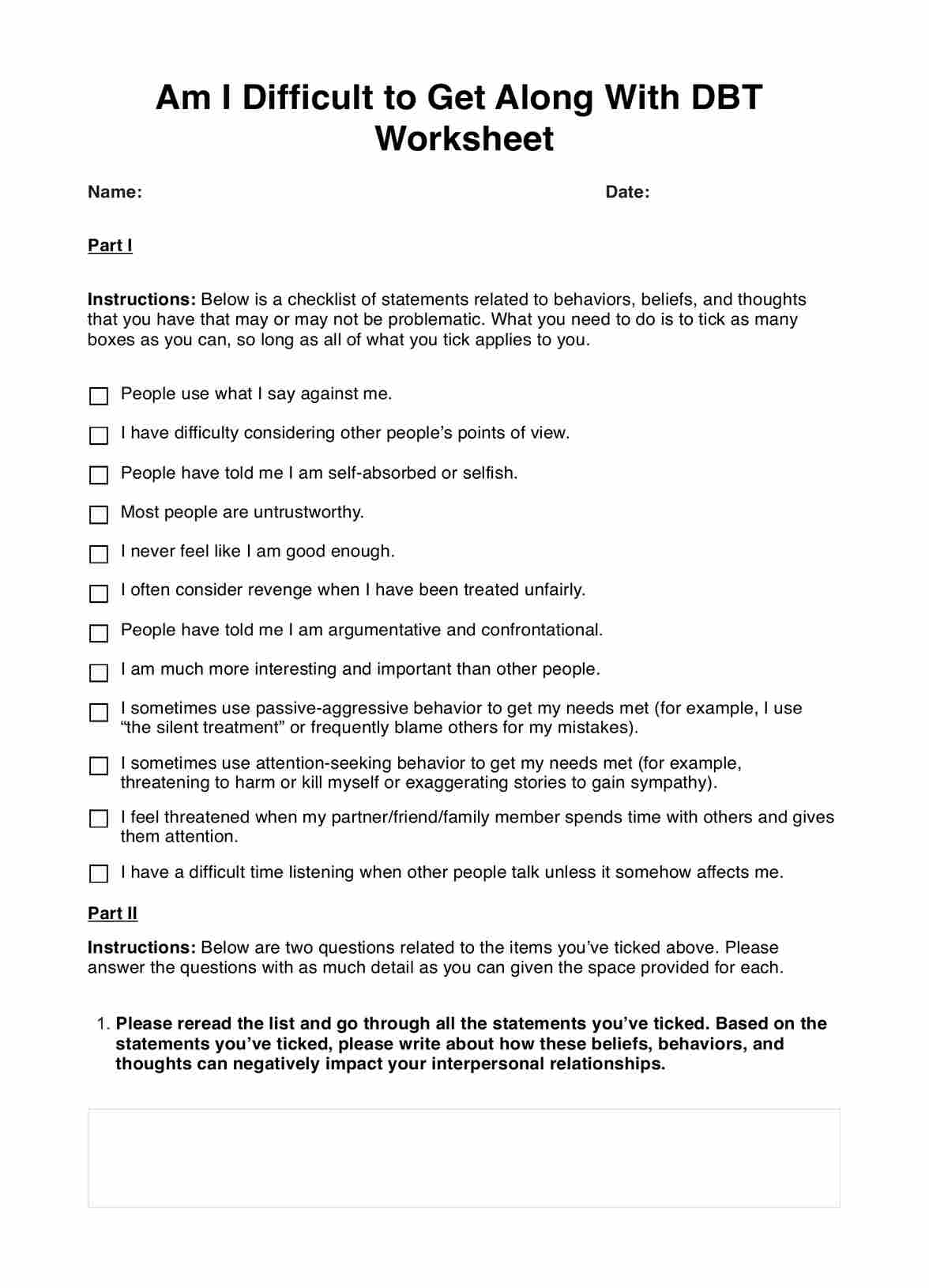That depends. If you already know what to answer based on what you read on the worksheet, it should take between 5 to 10 minutes. If you’re a therapist, agree with your patient on how long they should spend answering the worksheet.

Am I Difficult to Get Along With DBT Worksheet
Learn how to use the Am I Difficult to Get Along With DBT Worksheet to help individuals examine their relationships with others. Access the template here.
Am I Difficult to Get Along With DBT Worksheet Template
Commonly asked questions
Based on the instructions, no. The instructions are simple enough that this worksheet can be accomplished easily. Some people might take longer to answer since it asks them to think about their “problematic” thoughts and behaviors and what they would like to change.
Yes. While it’s easy to get the impression that this is only for DBT therapists, this can be used by non-healthcare professionals. If you’re a non-professional and want to use this worksheet for yourself, you’re free to do so! You might have a breakthrough and discover what things about yourself might become detrimental to your interpersonal relationships if not moderated or compromised.
EHR and practice management software
Get started for free
*No credit card required
Free
$0/usd
Unlimited clients
Telehealth
1GB of storage
Client portal text
Automated billing and online payments











